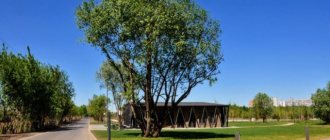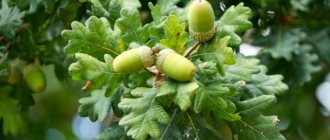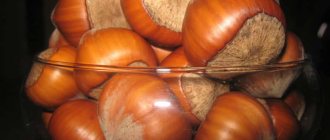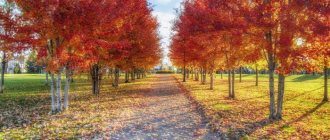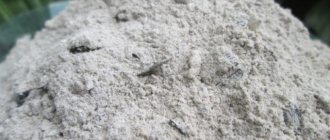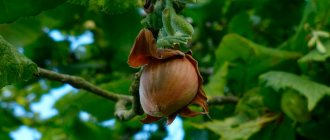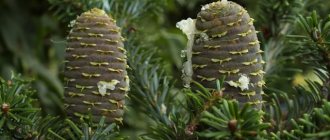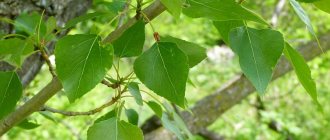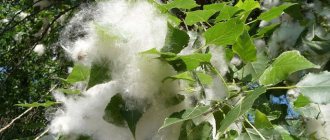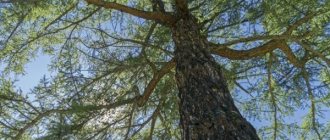Common oak is a widespread, tall deciduous tree with a huge, spreading crown and powerful trunk. Belongs to the genus oak (Quercus) of the beech family (Fagaceae).
The plant stands out among other trees not only for its power and impressive size. In terms of life expectancy, oak occupies one of the first places in the plant world. On average, it lives up to 400-500 years, but there are specimens that live up to 1500 and even 2000 years, reaching up to 4 meters in diameter. One of these long-livers is the Stelmuk oak, located in Lithuania and is 2000 years old. It is the oldest oak on the continent.
Thanks to these properties, common oak has enjoyed respect, love and honor in many countries for thousands of years. It was believed that it was given to people by the gods as a great gift. Oak was attributed magical properties and was used in occult rituals. In Greece, an oak branch was a symbol of strength, power and nobility. Oak branches were awarded to warriors who accomplished great feats. The oak was dedicated to the gods.
Oak is a medicinal plant, recognized not only by folk medicine, but also by official medicine. Its drugs are prescribed for the treatment of the gastrointestinal tract, respiratory system, kidneys and bladder, thyroid and pancreas, diseases of the female genital area, skin damage, in dermatology, etc. Almost all parts of oak have medicinal properties. As a supplement to the main medicinal treatment method, the plant is used for cancer of certain organs.
Oak and its beneficial properties have found application in the food industry. Roasted acorns are a substitute for coffee. Thus, people for whom natural coffee is contraindicated for some reason have the opportunity to experience the taste of their favorite drink. Often, acorns and chicory root are mixed to make this coffee. Such drinks not only have nutritional value, but also have medicinal properties.
In addition, acorns, peeled and ground into flour, are used in baking, as well as for the production of starch. Housewife leaves are often added as a spicy and aromatic additive when pickling vegetables, in particular cucumbers.
Oak wood, from which barrels are made, is also valuable in food production. Special substances - tannids - contained in it during storage of drinks give them a special taste and aroma. First of all, oak barrels are used for storing wines and cognacs, as well as beer, alcohol, vinegar, and oil.
Common oak is a warm and light-loving tree. Up to 8-10 years it grows slowly, but then the height increase is 30-35 cm (up to 1-1.5 m) per year. Thanks to this, as well as its durability, oak has found use as an anti-erosion, slope-strengthening, forest-forming, and field-protecting plant.
Also, the beneficial qualities of oak are widely used in landscape design, including as a phytoncidal plant, as well as for creating suburban groves and forest parks. Decorative forms with different crown shapes and later leaf fall in autumn have been developed.
The common oak tree is a pollen bearer and only in certain years produces nectar and is then actively visited by bees. Honeydew often appears on oak leaves, from which bees produce honeydew honey, which is of low quality.
Botanical description
Common oak is a deciduous tree. Height: 15-40, up to 50 m.
Root
The root system is powerful, consisting of a very long oak taproot and lateral roots.
Trunk
The trunk is powerful and thick. At a young age, irregular, geniculate, later straight, cylindrical. Oak trunk diameter: 1-1.5, up to 3 m.
The bark is thick and covered with deep cracks. The color of young trees is silver-gray, and from 50-60 years of age it changes to brown, dark gray, and blackish. Thickness (for old trees): up to 10 cm.
The crown is huge, powerful, highly branched, dense, spreading, tent-like or wide-pyramidal, asymmetrical.
Branches
The branches of the common oak are strong. The bark of young shoots is smooth, shiny, with transversely elongated lentils. The color of young trees is brown, olive-brown, reddish-gray, then changes to silver-gray.
Leaves
The buds are hemispherical, ovoid, obtuse. The scales are numerous, five-rowed, glabrous, with cilia along the edges. Color: light brown. Length: 5 mm, width: 4 mm.
The apical buds are surrounded by smaller lateral buds, which are located at some distance.
The leaves of common oak are bare, hard, almost leathery, simple, alternate, oblong-obovate, entire. The upper part is blunt or notched, the base is heart-shaped, with 4-6 rounded lobes with shallow notches between them and protruding veins. They are located on short (1 cm) petioles. Color of the upper part: dark green, shiny, lower part – lighter, yellowish. Length: 4-15 cm, width: 2.5-7 cm.
Flowers
Oak flowers are unisexual. One tree bears both male (staminate) and female (pistillate) flowers. Staminate - consist of five to seven-parted, fringed, membranous, greenish perianth at the edges and five to six (up to 12) stamens with short filaments and large yellow anthers. Collected in long, hanging, cylindrical inflorescences-earrings containing 10 or more flowers. They are located singly or grouped in 2-3 pieces. on the tops of last year's shoots or at the bottom of young shoots.
The pistillate flowers are reddish, on short stalks, collected in 2-3 pieces. on one reddish stalk. They are located on young shoots.
Fruit-seeds
The fruit of the common oak is an acorn (nut). Glabrous, ovoid, has a spine at the apex, immersed 1/3 of the length in a shallow cup-shaped plus (length 0.5-1 cm).
Color: brownish, brownish-yellow, shiny, with longitudinal greenish stripes. Length: 1.5-3.5 cm, diameter: 1.2-2 cm. Arranged in pairs, less often from one to five on one stem-peduncle (3-8 cm).
Flowering-reproduction
Blooms: in April-May (during the blooming of leaves and growth of young shoots). The fruits ripen: in September-October.
It reproduces by seeds (acorns), as well as stump shoots.
Maturation cycle
Oak is a tree that belongs to the evergreen plant species. Its crown may not change for several years. However, there are breeds whose leaves fall off with the onset of the first frost. The inflorescences of the tree are unisexual and small. It is worth noting that the crown cover is poorly developed during pollination. Only female flowers are strong; male catkins can fall off at the slightest breath of wind. It is noteworthy that oak is a tree whose pollination requires scales from two sexes at once. The ripening of the fruit occurs in a roller, which is a small saucer. Subsequently, an acorn grows in it. Each type of oak tree has different fruits and ridge shapes. In some species, acorns are elongated, in others they are round and small, in others they are nut-shaped. It is allowed to cross breeds, but this will most likely lead to a noticeable reduction in yield.
The tree grows extremely slowly, but can live for hundreds of years. The root system is formed during the first year, then constantly develops. It is interesting that after cutting down an oak tree, powerful shoots sprout abundantly from the stump after some time. Oak is a tree that is not too picky about soil, so the soil can be anything. Natural reproduction occurs by acorns. The height of the oak tree varies up to 40-45 meters. The volume of the crown depends on the breed and climate.
Habitat
Common oak is widespread in western Europe, northern Africa, western Asia, and North America. In the CIS countries this is the European part, with the exception of the Far North, Ukraine. Prefers gray forest loams, degraded black and brown soils, alluvial soils.
Common oak can be found in deciduous and mixed forests; it goes well with common hornbeam, common ash, cordate linden, sycamore maple, common elm, European beech, birch, spruce, fir, Scots pine, etc., forming a mono forest - oak forests. It also grows on mountain slopes, ravines, ravines, in river valleys, groves, forest plantations, along roads and streets, in parks and squares.
Collection and preparation
For medicinal purposes, the bark is most often harvested, and less often the fruits (acorns), leaves, young branches, and leaf galls. The collection of oak bark is carried out during sap flow, which coincides with bud bursting - April-May. Only young trees without cracks and lichens with a trunk diameter of 10-20 cm, cut down at logging sites or during sanitary fellings, are used. Using a sharp knife, circular cuts are made on the trunk at a distance of 30 cm from one another, which are connected by a longitudinal cut. In this case, the bark is easily removed.
The collected raw materials are dried in the open air (possibly in the sun) under a canopy or indoors with good air ventilation, spread out in a thin layer, not forgetting to turn over periodically. When drying, it is important to ensure that the bark does not become wet, as this will lose a significant part of the medicinal properties. Ready dried bark breaks when bent, undried bark bends.
Harvesting young oak branches is also carried out during the period of sap flow. Dried in small bundles, hung, for example, on a clothesline. Leaves are collected after they are formed (before May 15). Drying is carried out as usual, not forgetting to turn it over periodically.
Acorns are harvested in the fall, when they are fully ripe and fall to the ground. Initially, they are dried in the open air under a canopy with good air ventilation, spread in one layer. They are finally dried in special dryers or ovens. Then the shell and seed coat are removed.
Finished dried raw materials are stored in bags and boxes made of natural materials in a dry, well-ventilated area. Shelf life:
- leaves - one year;
- bark – 5 years;
- acorns – not established.
Pests of oak trees
In the summer, powdery mildew often attacks the tree; the seedlings will not die from this, but will grow slowly. Fungal disease is treated with sulfur.
The tree can dry out due to insects that eat the bark from the inside, as well as the leaves. There are more than 180 species of oak pests, including caterpillars, butterflies, and mice.
Chemical composition
The beneficial and medicinal properties are determined by the components in the chemical composition of common oak. All parts of the plant contain tannins: in young bark - up to 29% (their amount decreases with age), galls (spherical growths on leaves) - 30%, acorns - 5-8%, wood - 4-6%.
In addition, flavonoids (quercetin, etc.), pentosans (13-14%), organic acids - gallic and ellagic (up to 1.6%), triterpenoids, pectins (6%), protein substances, phlobafen, levulin, sugar, mucus, starch. Vitamins are represented by vitamin B1, B2, B6, PP, C. The following macro- and microelements were found in the bark: potassium (1.4 mg/g), calcium (23 mg/g), magnesium (0.6 mg/g), iron (0.2 mg/g), as well as barium (537.12 μg/g), strontium (212 μg/g), manganese (142.6 μg/g), aluminum (116.08 μg/g), boron (74.8 µg/g), copper (12.3 µg/g), zinc (10.2 µg/g), etc.
The chemical composition of common oak acorns is as follows: starch (up to 40%), carbohydrates, proteins, fatty oil (up to 5%), sugars. The leaves contain flavonoids (quercetin, quercitrin), pentosans, triterpenoids, pigments, ascorbic acid (up to 0.2%), etc.
How long does it take to grow an oak tree from an acorn?
It is better to plant oak trees with acorns; when transplanted, seedlings with bare roots do not take root well. If you are in a hurry to “live”, buy an oak tree from a skating rink, you can save 8 years or add them to your life, if it’s more pleasant for you to think about it that way. Plants with a closed root system take root and grow well, but unfortunately, an oak planted in this way will not be durable. Of course, it will be enough for your lifetime, but no more, this is due to the improper development of the root system of an oak seedling grown in a small vessel in the first years of life. By growing an oak from an acorn, you will lose a couple of years, but an oak grown in this way will grow for a long time and your children, grandchildren and grandchildren of your grandchildren will remember you.
Use of common oak in folk medicine
A large number of people, freely using plants to treat various diseases, believe that they are absolutely harmless. However, among medicinal plants there are potent, toxic and even poisonous ones. In addition, many people, especially older people, have several chronic diseases.
Therefore, in order for the treatment to be effective, when using it, one should take into account the beneficial and medicinal properties of common oak and the contraindications that it has, and this can only be done by a doctor. Based on this, before you start taking common oak preparations, consult a doctor, or better yet, a herbalist you trust. The information given below is for informational purposes only.
Vascular diseases
Good results are achieved when using the medicinal properties of oak bark to treat vascular diseases. Internal course administration of the infusion is recommended for diseases of the lymph nodes and hemorrhoidal bleeding.
For hemorrhoids, external procedures are also carried out in parallel. A decoction of the bark is used for washing and enemas. Also, lotions are made with the decoction on sore spots with varicose veins.
Oak wood is beneficial as a medicine for high blood and intraocular pressure. For these purposes, ash from burnt oak wood is taken internally in courses.
Respiratory diseases
The plant has an astringent, antiseptic, antibacterial, anti-inflammatory, and hemostatic effect. Based on this, common oak is effective in treating various respiratory diseases. A decoction of the bark, either by itself or as part of various preparations, is prescribed for gargling for various inflammatory processes, such as sore throat, hoarseness, etc.
In France, an infusion of oak bark is taken internally for tuberculosis.
Gastrointestinal diseases
The benefits of oak are widely used for certain diseases of the stomach and intestines. Course treatment with bark preparations is carried out for diseases such as gastritis, gastric and duodenal ulcers, ulcerative colitis, inflammatory bowel disease, enterocolitis, colic, etc. As an astringent, the infusion is drunk for diarrhea, dysentery and cholera.
Since oak bark has a hemostatic effect, its infusion is prescribed for gastrointestinal bleeding. As an antidote, this remedy will help with poisoning by mushrooms, as well as alkaloids and salts of heavy metals. For preventive purposes, a warm infusion improves digestion.
The medicinal properties of oak acorns are also applicable for these diseases. In the form of coffee or powder, they are used for colitis.
The plant is also used externally. For ulcerative colitis, rectal prolapse, anal fissures, dysentery, microenemas are given with a decoction of oak (bark).
For the liver
The healing and beneficial properties of oak (wood) have proven effective in treating several liver diseases, including tumors. For these purposes, use an infusion of bark.
Kidney and bladder diseases
As a medicinal plant, oak is recommended for diseases of the bladder, urinary tract and kidneys. An infusion prepared from bark and leaves in a ratio of 1:10 is drunk for pathologies such as inflammation of the urinary tract, blood in the urine, kidney bleeding, etc.
For frequent urge to urinate, you can use either a mixture of bark and leaves or an infusion of the bark. The medicinal properties of oak leaves help with bedwetting. For pyelonephritis, a course of treatment is carried out with an infusion of the bark.
For the pancreas
How is oak beneficial for the pancreas? In Azerbaijan, infusion and juice of the leaves are taken for diabetes. Acorns in the form of an infusion or decoction also have the same properties.
For the spleen
In both official and folk medicine, oak (bark infusion) is prescribed for the treatment of diseases of the spleen, including tumors.
For the thyroid gland
The benefits of oak decoction also apply to thyroid diseases. As an addition to the main treatment, a decoction of the bark is used as a lotion for goiter.
Also, for these pathologies, an internal course of bark infusion is administered.
Nervous system diseases
When asked whether oak is a medicinal plant, an example can be given that even acorns in the form of infusion or decoction, as well as acorn coffee, have a positive effect on diseases of the nervous system. Acorn juice is used for the same purposes.
Oncological diseases
Herbalist Rim Akhmedov recommends the external medicinal and beneficial properties of oak bark for the treatment of cancer of certain organs. For breast cancer, a warm decoction is used as a lotion on the sore breast. Polyethylene is laid on top and must be insulated. The procedure is carried out in the morning and evening, duration is two hours.
Such lotions are also used for thyroid cancer.
For women
The use of oak properties has proven its effectiveness in treating diseases of the female genital area. Internal course treatment with an infusion of bark (leaves) is carried out for uterine bleeding, heavy (polymenorrhea) and painful menstruation, trichomoniasis, various inflammatory processes, etc. To achieve a faster and longer-lasting effect, douching is done at the same time, also using a decoction of the bark or an infusion of leaves.
In addition, baths, tampons and douches from bark decoction help with cervical erosion. For trichomonas colpitis, tampons made from crushed young oak leaves are prescribed.
The healing properties of oak acorns are also useful for these diseases. An infusion or decoction is drunk during heavy menstruation and leucorrhoea.
For vision
In folk medicine, the beneficial properties of oak ash (internally) are a recognized remedy for the treatment of glaucoma.
For teeth and gums
As a medicine, oak bark has shown itself to be effective for various diseases of the oral cavity. Considering its numerous properties, the bark is used for rinsing primarily for inflammatory processes, gingivitis, stomatitis, gumboil, as well as for loosening and bleeding gums, inflammation of the tongue, etc. Also, such procedures eliminate bad breath.
Joint diseases
Bark preparations are prescribed for the treatment of rickets. To do this, the infusion is drunk in courses. Also, for this disease, it is permissible to use infusion, decoction, or juice of acorns.
At the same time, a decoction of the bark, both on its own and as part of a mixture, is used for baths.
Skin diseases
In medicine, oak has found wide application for various skin diseases. A decoction of the bark in the form of washes, lotions, baths, trays is recommended for allergic dermatoses, eczema, scrofula, boils, ulcers, etc. Also, for weeping eczema, lotions using a mixture consisting of oak and pine bark have worked well.
Oak gall preparations are also effective for these diseases. The decoction is used for lotions, the powder of dried galls is used for powders, the juice is used to lubricate damaged surfaces in the treatment of skin tuberculosis, eczema, lichen, etc.
Wounds, cuts, burns...
The healing and beneficial properties of oak leaves, bark and galls will be beneficial for various damage to the skin. When applying herbal preparations to damaged areas of the skin, a protective film is formed that prevents local irritation, resulting in reduced inflammation and pain.
A decoction of the bark is used in the form of rinses, washes, lotions for the treatment of wounds, including purulent ones, burns, frostbite, bedsores, skin cracks, etc. Good results are obtained by using an ointment prepared from a mixture of oak bark and black poplar buds.
Fresh leaves are recommended in the form of overlays for purulent cuts and wounds, for which they are first crushed to a paste.
Gall preparations also help with purulent wounds and burns. The decoction is used as a lotion, the juice is applied to damaged surfaces, and the powder of dried galls is used as a powder.
Interesting Facts
Many myths, legends, and stories are associated with centuries-old giants. For humans, oak is the personification of strength, power, and energy.
- Druids performed the ritual of “seducing lightning,” knowing that oak attracts lightning more often than other trees.
- 80 years of married life is called an “oak wedding.” The union is associated with the longevity and strength of oak.
- The most expensive mushrooms chose tree roots for their mycelium. These are truffles, a favorite delicacy of the French. Without nourishment from the oak tree, they die.
- Many trees have become famous due to their size and age. The oldest oak tree is located in France, its trunk girth is 9 meters. According to legend, the soldiers of Julius Caesar rested under it.
Dosage forms
Infusion of bark (inside)
10 gr. (1 tbsp) pour 250 ml of crushed raw materials. boiling water Cover with a lid, insulate and leave for 2 hours. Strain.
Take 15-30 ml. (1-2 tbsp) 3-4 times a day before meals.
Bark decoction (externally)
In an enamel bowl 20 gr. (2 tbsp) pour 250 ml of raw materials. hot boiled water. Place the container in a water bath, cover with a lid and heat (with boiling water) for half an hour.
Remove from the bath, wrap and leave with the lid on until warm. Strain, squeeze out the raw materials. Bring the resulting decoction to its original volume using boiled water.
Store in a cool place, for example, on the bottom shelf of the refrigerator, for no longer than two days.
Leaf infusion
1 tsp raw materials pour half a liter of boiling water. Cover with a lid, insulate and leave for two hours. Strain, squeeze out the raw materials.
Take 0.5 tbsp. 3 times a day before meals.
Infusion of fruits (acorns)
1 tsp pour 250 ml of crushed raw materials. boiling water Cover with a lid, wrap and leave until warm. Strain.
Take half a glass three times a day. The course of treatment is a month, then a break is taken for a month and the course is repeated if necessary.
Nuts
The fruits of the pedunculate oak are bare, placed on a long stalk. Its size is three to eight centimeters. The color of acorns is brownish-brown. Their length is one and a half to three and a half centimeters, diameter is one to two centimeters. The nut is placed in a saucer called a plyuska. The fruits ripen in September-October.
Acorns are characterized by good germination. They are spread by birds, especially jays. Up to ten years, seedlings grow slowly. Then the growth accelerates to thirty-five centimeters per year, sometimes more.
Traditional medicine recipes
Glaucoma
Burn the oak wood and sift the resulting ash thoroughly.
2 tbsp. pour 500 ml of ash. boiling water Mix. Cover with a lid and leave for a day. Strain.
Take 45 ml. (3 tbsp) three times a day half an hour before meals. The course of treatment is two weeks, then a break of 5 days and repeat the course.
The infusion is also recommended for increased intraocular and blood pressure.
Trichomonas colpitis
Young leaves are ground to a pulp using, for example, a meat grinder. The resulting mass is wrapped in gauze, a tampon is formed, which is inserted into the vagina.
Contraindications
In order for the treatment to be beneficial, it is necessary to take into account not only the medicinal and beneficial properties, but also the contraindications of common oak that it has. Internal administration of bark preparations is contraindicated for constipation. The infusion of leaves should not be consumed by children.
Although there are recommendations to drink an infusion of bark for hemorrhoidal bleeding, other sources list hemorrhoids as a contraindication to the use of the drug. Therefore, if you have this disease, it is better not to take risks and consult your doctor.
Although common oak is not a poisonous plant and does not cause complications in recommended doses, nevertheless, when using plant preparations (bark, leaves, etc.) internally, care should be taken to avoid overdose.
So the maximum daily dosage of leaf preparations is two glasses. If you rinse your mouth with a bark decoction for a long time, your sense of smell may deteriorate.
Also, during a course of treatment, oak preparations should not be taken for a long time; breaks must be taken.
Sources:
V.S. Berry. Medicinal plants in dermatology and cosmetology.
V.V. Reshetnyak. Herbalist.
S.Ya. Sokolov, I.P. Zamotaev. Handbook of medicinal plants.
M.A. Nosal i I.M. Nosal. Medicinal plants and methods of their adoption among the people.
L.G. Dudchenko, A.S. Kozyakov. Spicy-aromatic and spicy-flavoring plants.
Rim Akhmedov. Plants are your friends and foes.
Advice from the traditional healer Evdokia. Herbalist, illustrated reference book.
Ivashin D.S., Katina Z.F. Medicinal plants of Ukraine.
I.N. Putyrsky, V. Prokhorov. Universal encyclopedia of medicinal plants.
Maznev N.I. Encyclopedia of medicinal plants.
A. Markova. Herbalist. Golden recipes of traditional medicine.
A.P. Popov. Medicinal plants in folk medicine.
Resource usage
Oaks are mostly used in construction and cooking, as well as in light industry. Sawdust is used to make corks and furniture. The wood is optimal for surface vessels, fortifications, machine building, and barrel making. The boards do not swell, do not burn well, and are durable, hard and dense. When the oak leaves bloom and the acorns ripen, it’s time for the cooks. In North America, the fruits of the tree are often added to coffee, candy and the most delicious dishes. In Asia, acorns are eaten fried with spices.
The giant oak tree in France, in the hollow of which there is a room with a bench carved directly into the body of the oak tree, is more than two thousand years old. It is precisely because of their age and gigantic size that many oaks have become relics of cities and nations and are under protection. The Tsar Oak, the Kaiser's Oak, the 600-year-old Oak, the Chapel Oak, the Master's Oak have legends about each of them.
Oak is hardy and unpretentious, but despite these properties,
oaks do not grow in South America and Australia; in Africa they are found only along the Mediterranean coast.
In Russia, English oak grows with two varieties: summer oak and winter oak, differing in flowering time. Mongolian oak grows in the Far East and Amur region. Sessile oak grows on the Black Sea coast of the Caucasus.
In the 18th and 19th centuries, it was customary to decorate the clearings in front of the landowner's house with oaks; oaks were grown in palace and manor parks. Sometimes oak trees are planted to green cities; recently, gardeners have also begun to pay attention to this wonderful plant. Hence the logical question - how many years does an oak tree grow until the moment when it allows you to admire its beauty and grace?
It’s a long time, but if you have the opportunity and space to plant an oak tree, be sure to plant it, and even if you don’t manage to admire the fruits of your labor, you will leave a memory of yourself for many generations.
At ten years old, you planted will outgrow the medium-sized fruit trees in your garden - apple and pear trees; at 20 years old the first acorns may appear on it , although oaks usually reach fruiting age at 40 years. Don’t be surprised, for an oak tree 450 years is the age, as they would say about a man at the dawn of his strength. The oak bears fruit with acorns approximately once every 4 years, but the oak is grown not because of the acorns, but for the strength and wisdom that it gives to its owners and this is not an allegory.
Plant the oak tree away from your home so that it doesn’t turn out like in this photo.
An oak tree in the body of which there is a chapel - France.
The soil for planting oak can be different; the density and strength of the wood and its durability depend on it. And oak can grow on sand and stones, along river banks, in lowlands in swamps and in elevated places, among bogs. The main thing is that the planted seedling is not burned by the sun, and the roots do not get wet in water in the first years of its life. Typically, oak grows up to 40 meters in height and up to 1.5 meters in width. The crown of the oak tree is gigantic, matching its height, so take care that in the future it does not damage your home and nearby buildings.


